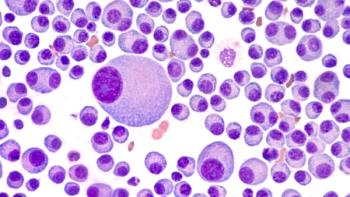
How Disease Activity Affects Quality of Life in Patients With Psoriatic Arthritis
Patients with active psoriatic arthritis experience significant work instability based on disease activity.
For patients with psoriatic arthritis (PsA), minimal disease activity (MDA) is linked to better health-related quality of life and productivity, according to findings presented at the 2017 American College of Rheumatology/Association of Rheumatology Health Professionals
Annual Meeting.
“The minimal disease activity criteria were the first definition of a disease state (an absolute level of disease activity) in psoriatic arthritis rather than a response (a percentage improvement/change),” Laura C. Coates, MBChB, MRCP, PhD, NIHR, clinician scientist and senior clinical research fellow, told Specialty Pharmacy Times.
For this study, the authors analyzed data from an integrated database of the results of 2 double-blind, phase II trials involving 679 patients with active PsA. SPIRIT trial researchers are studying the efficacy and safety of ixekizumab, a high-affinity monoclonal antibody selectively targeting interleukin-17A.
Coates and colleagues used the following to evaluate health-related quality of life and productivity: the 36-Item Short Form Health Survey (SF-36), the European Quality of Life 5 Dimension 5 Level Health Questionnaire (EQ-5D-5L), the EQ-5D visual analog scale (EQ-5D VAS), and the Work Productivity and Activity Impairment-Specific Health Problem (WPAI-SHP).
To achieve MDA, patients had to meet 5 of 7 criteria: tender joint count ≤1, swollen joint count ≤1, Psoriasis Area and Severity Index total score ≤1 or body surface area ≤3%, patient assessment of pain VAS ≤15, patient global assessment of disease activity VAS ≤20, Health Assessment Questionnaire Disability Index ≤0.5, and tender entheseal points ≤1.
The researchers assessed the results at week 24. Compared with MDA nonresponders, the patients who achieved MDA had significantly better SF-36 Physical Component Scores (12.31 vs. 3.10; P<0.001), EQ-5D-5L Index values (0.20 vs. 0.07; P<0.001) and EQ-5D VAS scores (22.48 vs. 5.68; P<0.001). The SF-36 Mental Component Scores were similar in the two groups (4.43 vs. 3.76).
In addition, the percentage of presenteeism, overall work impairment and percentage of activity impairment on the WPAI-SHP was significantly better in the MDA responder group.
“This work confirms previous research which has found that these criteria correspond well to the patient’s perception of disease control,” Coates said. “The analysis showed that patients with active PsA achieving MDA on therapy have better quality of life and lower levels of work instability. This is particularly important as it confirms that the clinical measure of MDA utilized in clinic is associated with a better prognosis in key areas of concern for patients such as quality of life and participation.”
Newsletter
Stay informed on drug updates, treatment guidelines, and pharmacy practice trends—subscribe to Pharmacy Times for weekly clinical insights.




















































































































































































































